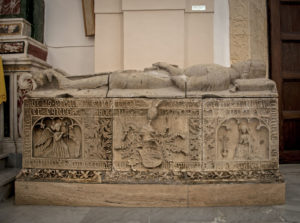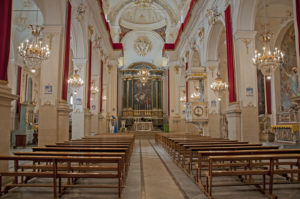 As you enter the church you are almost blinded by the powerful light of this space.
As you enter the church you are almost blinded by the powerful light of this space.
The walls are completely white, adorned with 18th-century stucco and gilding, works by the artist Onofrio Russo from Policoro.
The elegant pillars with exposed stone bases and the arcades that divide the central nave from the two lateral ones, create a fitting pattern that draws the eye to the apse.
From this point, raised by five mixtilinear steps, stands the main altar, a wooden piece from 1753, which frames the 18th-century altarpiece of the Nativity of the Virgin by Olivio Sozzi, surrounded by the soft light from the two small openings on the apse. The scenic dramatics inside this church are also given by the contrast between the white walls and the many colourful works that dot the space.
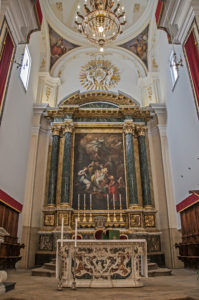
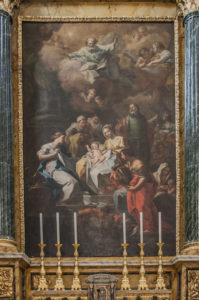
Along the side naves, each bay is characterised by a marble altar surmounted by a painting or a fresco, while the vaults are highlighted by gilding and have a frescoed tondo in the centre, which accentuates the three-dimensionality.
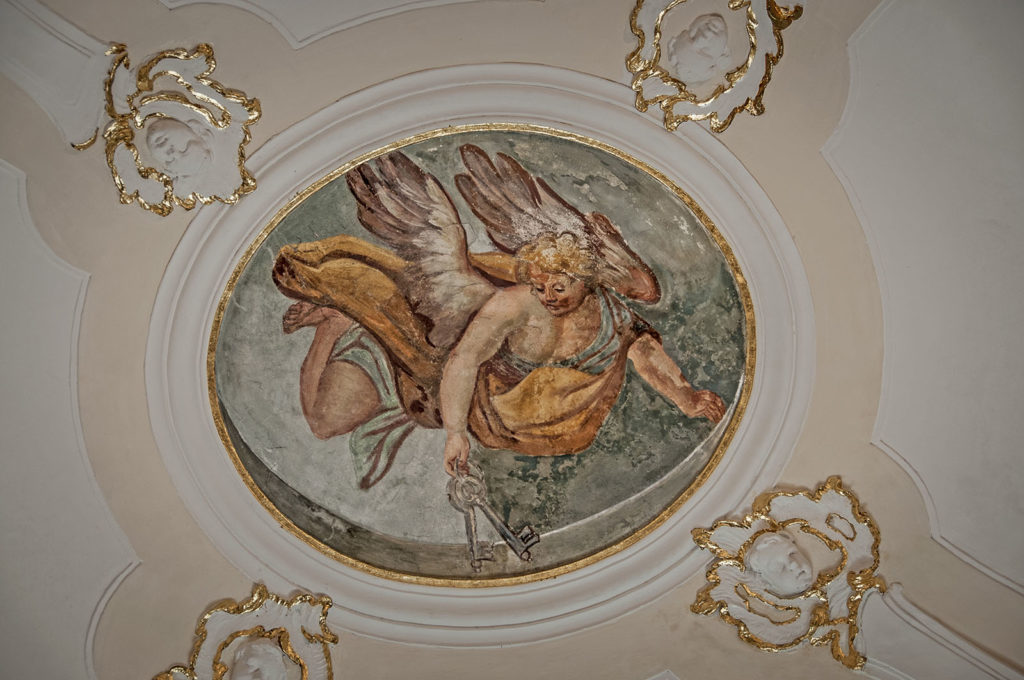 Remember that the Barresi and Branciforte families from the 15th century promoted many artists and played an important role in the reconstruction of the church of Santa Maria della Stella dei Barresi, hence its name.
Remember that the Barresi and Branciforte families from the 15th century promoted many artists and played an important role in the reconstruction of the church of Santa Maria della Stella dei Barresi, hence its name.
One of the most famous of the many artistic artefacts is the glazed terracotta of the Nativity by
Andrea della Robbia
. Also worthy of mention is the
tomb
of Blasco II Barresi of 1465.

